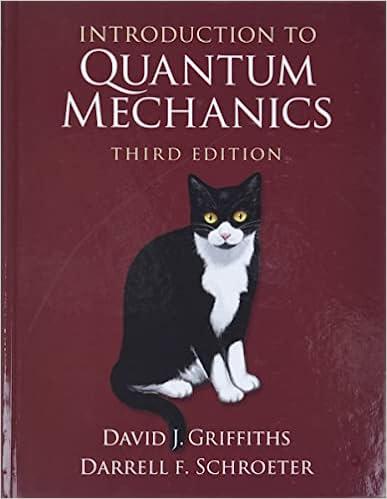The theory of scattering generalizes in a pretty obvious way to arbitrary localized potentials (Figure 2.21). To
Question:
The theory of scattering generalizes in a pretty obvious way to arbitrary localized potentials (Figure 2.21). To the left (Region I), V (x) = 0, so

To the right (Region III), V (x) is again zero, so
 In between (Region II), of course, I can’t tell you what is until you specify the potential, but because the Schrödinger equation is a linear, second-order differential equation, the general solution has got to be of the form
In between (Region II), of course, I can’t tell you what is until you specify the potential, but because the Schrödinger equation is a linear, second-order differential equation, the general solution has got to be of the form
![]() where f(x) and g (x) are two linearly independent particular solutions. There will be four boundary conditions (two joining Regions I and II, and two joining Regions II and III). Two of these can be used to eliminate C and D, and the other two can be “solved” for B and F in terms of A and G:
where f(x) and g (x) are two linearly independent particular solutions. There will be four boundary conditions (two joining Regions I and II, and two joining Regions II and III). Two of these can be used to eliminate C and D, and the other two can be “solved” for B and F in terms of A and G:
![]()
The four coefficients Sij , which depend on k (and hence on E), constitute a 2 x 2 matrix S, called the scattering matrix (or S-matrix, for short). The S-matrix
tells you the outgoing amplitudes (B and F) in terms of the incoming amplitudes (A and G):

In the typical case of scattering from the left, G = 0, so the reflection and transmission coefficients are
 For scattering from the right, A = 0, and
For scattering from the right, A = 0, and

(a) Construct the S-matrix for scattering from a delta-function well (Equation 2.117).
(b) Construct the S-matrix for the finite square well (Equation 2.148).

Figure 2.21: Scattering from an arbitrary localized potential (V (x) = 0 except in Region II); Problem 2.53.
Step by Step Answer:

Introduction To Quantum Mechanics
ISBN: 9781107189638
3rd Edition
Authors: David J. Griffiths, Darrell F. Schroeter





